Failure Modes
from Mechanics of Wood and Wood Composites, J.
Bodig & B.A. Jayne, Krieger Publishing, 1993, pp. vii, 5, 291, 297, 299,
305.
Compression
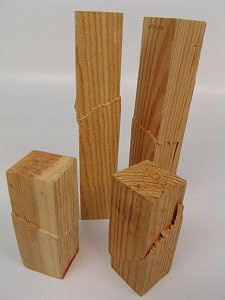
Jeff Thomas, 2010
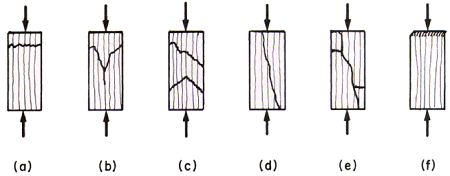
Failure types of nonbuckling clear wood in compression parallel to grain:
(a) crushing, (b) wedge splitting, (c) shearing, (d) splitting, (e) crushing
and splitting, (f) brooming or end rolling.
Tension
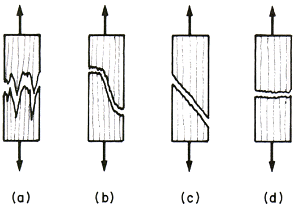
Failure types of clear wood in tension parallel to grain: (a) splintering
tension, (b) combined tension and shear, (c) shear, (d) brittle tension.
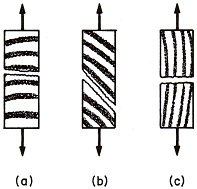
Failure types of clear wood in tension perpendicular to grain: (a)
tension failure of earlywood, (b) shearing along a growth ring, (c) tension
failure of wood rays.
Flexure
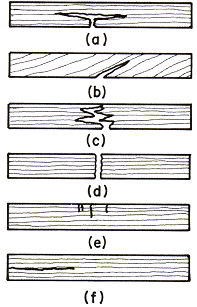
Failure types of clear wood in bending with span parallel to grain: (a)
simple tension, (b) cross-grain tension, (c) splintering tension, (d) brash
tension, (e) compression, (f) horizontal shear.
Failure Models
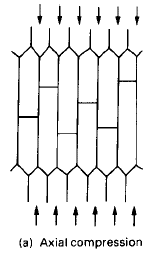 |
|
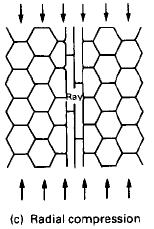 |
|
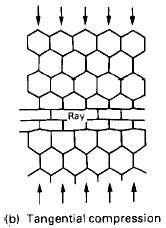 |
from Engineering Materials 2, M.F.
Ashby, R.H. Jones, Pergamon Press,
1986, p. 260. |
Polymeric foams, showing polyhedral cells. Some foams have closed
cells, others have cells which are open. Wood cells are similar to
closed foam cells. from
Engineering Materials 2: An Introduction to Microstructures, Processing and
Design, M.F. Ashby & D.R.H. Jones, Pergamon, 1994, pp. 250, 252-3, 258.
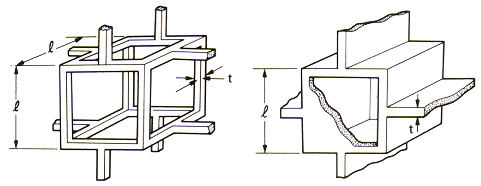
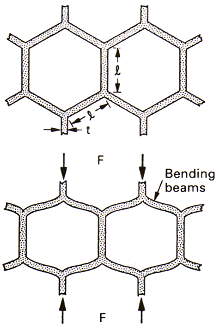 |
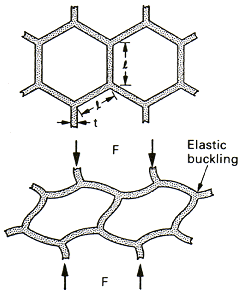 |
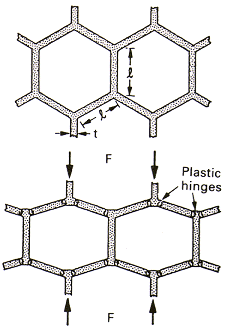 |
| Cell wall bending gives the linear-elastic portion of the
stress-strain curve. |
When an elastomeric foam is compressed beyond the linear
region, the cell walls buckle elastically, giving a long plateau of the
stress-strain curve. |
When a plastic foam is compressed beyond the linear
region, the cell walls bend plastically, giving a long plateau on the
stress-strain curve. |











